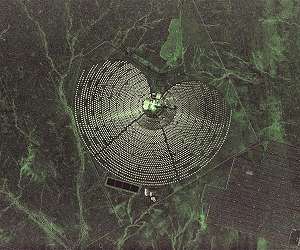The material class of halide perovskites is seen as a great hope for even more solar power at even lower costs. The materials are very cheap, can be processed into thin films with minimal energy input and achieve already efficiencies that are significantly higher than those of conventional silicon solar cells.
The Goal: 20 Years Outdoor Stability
However, solar modules are expected to provide stable output for at least 20 years in outdoor conditions while exposed to large temperature fluctuations. Silicon PV manages this easily, whereas the semi-organic perovskites lose performance rather fast.
“Sunlight can heat up the inside of a PV cell to 80 Celsius; in the dark, the cell then cools down immediately to the outside temperature. This triggers large mechanical stresses in the thin layer of perovskite microcrystals, creating defects and even local phase transitions, so that the thin film loses its quality,” explains Prof. Antonio Abate, who heads a large group at HZB.
Chemical Variations examined
Together with his team and a number of international partners, he has investigated a chemical variation that significantly improves the stability of the perovskite thin film in different solar cell architectures, among them the p-i-n architecture, which normally is a little less efficient than the more often used n-i-p architecture.
A “Soft Shell” against Stress
“We optimized the device structure and process parameters, building upon previous results, and finally could achieve a decisive improvement with b-poly(1,1-difluoroethylene) or b-pV2F for short,” says Guixiang Li, who is doing his PhD supervised by Prof. Abate. b-pV2F molecules resemble a zigzag chain occupied by alternating dipoles.
“This polymer seems to wrap around the individual perovskite microcrystals in the thin film like a soft shell, creating a kind of cushion against thermomechanical stress,” Abate explains.
Record Efficiency for p-i-n Architecture 24,6%
In fact, scanning electron microscope images show that in the cells with b-pV2F, the tiny granules nestle a little closer. “In addition, the dipole chain of b-pV2F improves the transport of charge carriers and thus increases the efficiency of the cell,” says Abate. Indeed they produced cells on a laboratory scale with efficiencies of up to 24.6%, which is a record for the p-i-n architecture.
One Year Outdoor Use
The newly produced solar cells were subjected over a hundred cycles between +80 Celsius and -60 Celsius and 1000 hours of continuous 1-sun equivalent illumination. That corresponds to about one year of outdoor use.
“Even under these extreme stresses, they still achieved 96 % efficiency in the end,” Abate emphasises. That is already in the right order of magnitude. If it is now feasible to reduce the losses a little further, perovskite solar modules could still produce most of their original output after 20 years – this goal is now coming within reach.
Research Report:Highly efficient p-i-n perovskite solar cells that endure temperature variations
Related Links
Helmholtz-Zentrum Berlin
All About Solar Energy at SolarDaily.com
|
We need your help. The SpaceDaily news network continues to grow but revenues have never been harder to maintain. With the rise of Ad Blockers, and Facebook – our traditional revenue sources via quality network advertising continues to decline. And unlike so many other news sites, we don’t have a paywall – with those annoying usernames and passwords. Our news coverage takes time and effort to publish 365 days a year. If you find our news sites informative and useful then please consider becoming a regular supporter or for now make a one off contribution. |
||
|
SpaceDaily Contributor $5 Billed Once credit card or paypal |
SpaceDaily Monthly Supporter $5 Billed Monthly paypal only |
|

![]()
Solar tower power plants – sunlight becomes electricity on demand
Berlin, Germany (SPX) Jan 23, 2023
Solar power is becoming an increasingly important source of energy worldwide. At present, photovoltaic systems are predominantly being used in Germany. For sunny countries, solar tower power plants are a valuable addition. They store heat and can generate electricity at any time – even when the sun is not shining. The new highlight images from the German TerraSAR-X and TanDEM-X radar satellites present unique images of the changing Earth and also show solar thermal power plants around the world.
I … read more
